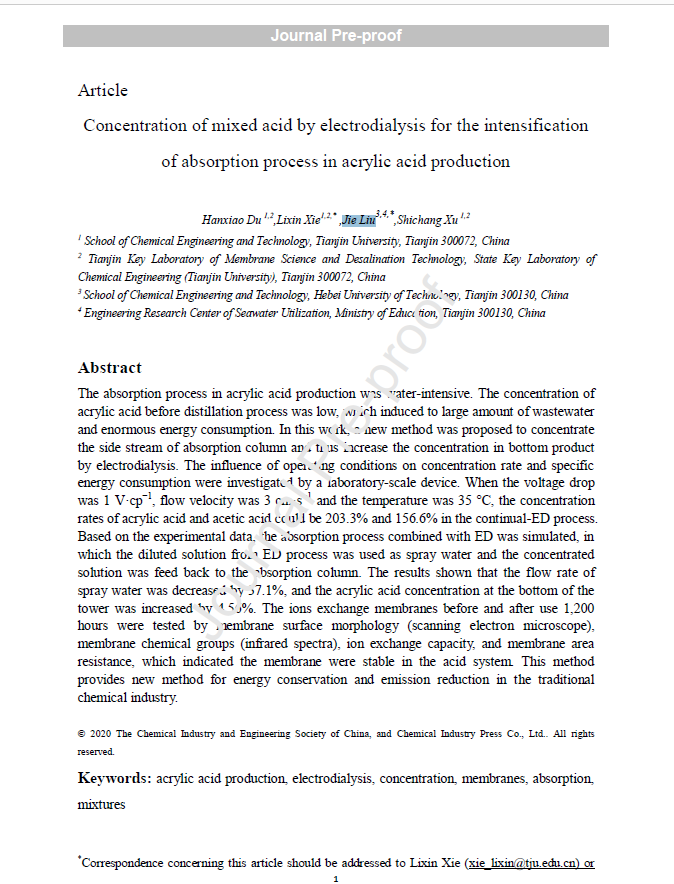The absorption process in acrylic acid production was water-intensive. The concentration of acrylic acid before distillation process was low, which induced to large amount of wastewater and enormous energy consumption. In this work, a new method was proposed to concentrate the side stream of absorption column and thus increase the concentration in bottom product by electrodialysis. The influence of operating conditions on concentration rate and specific energy consumption were investigated by a laboratory-scale device. When the voltage drop was 1 V·cp−1, flow velocity was 3 cm·s−1 and the temperature was 35 °C, the concentration rates of acrylic acid and acetic acid could be 203.3% and 156.6% in the continual-ED process. Based on the experimental data, the absorption process combined with ED was simulated, in which the diluted solution from ED process was used as spray water and the concentrated solution was feed back to the absorption column. The results shown that the flow rate of spray water was decreased by 37.1%, and the acrylic acid concentration at the bottom of the tower was increased by 4.56%. The ions exchange membranes before and after use 1,200 hours were tested by membrane surface morphology (scanning electron microscope), membrane chemical groups (infrared spectra), ion exchange capacity, and membrane area resistance, which indicated the membrane were stable in the acid system. This method
provides new method for energy conservation and emission reduction in the traditional chemical industry.
